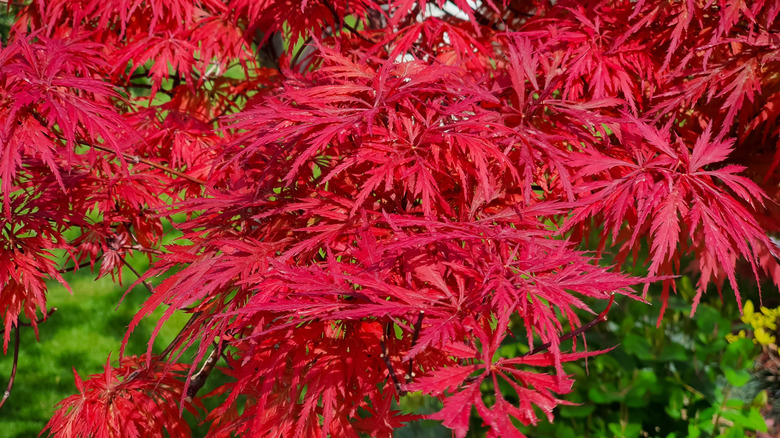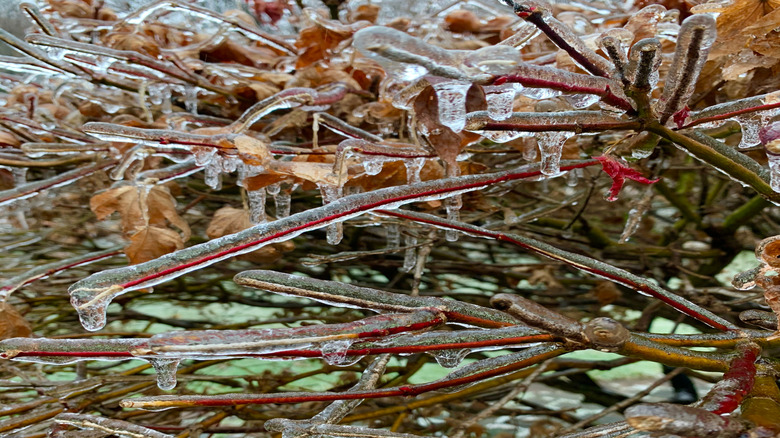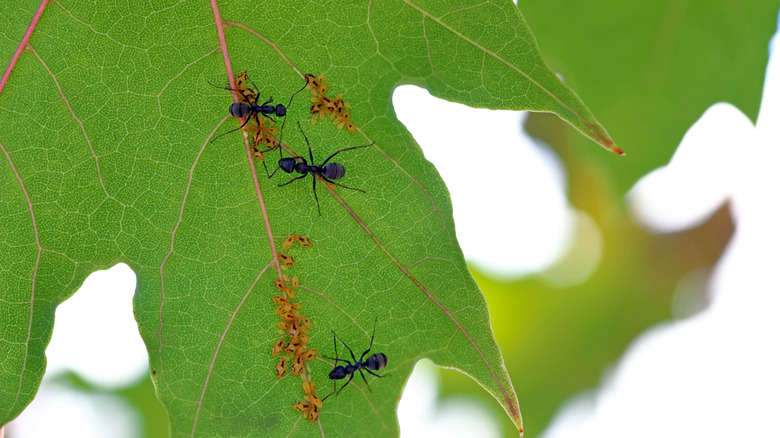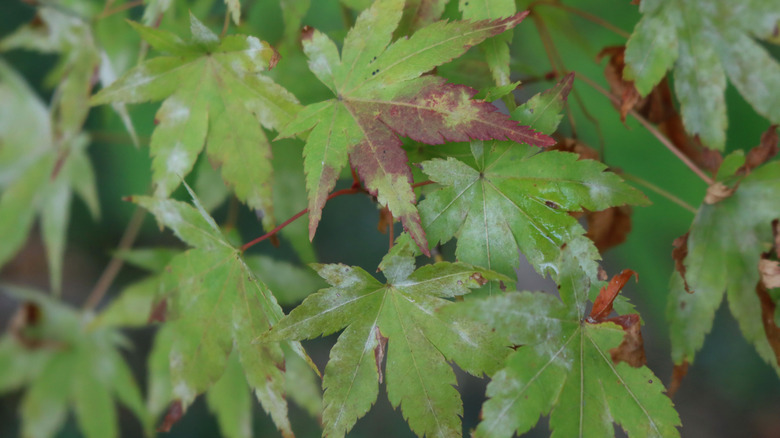Issues You Should Know About Before Planting A Japanese Maple Tree
There's nothing quite as breathtaking as a beautiful Japanese maple when it's displaying its stunning fall colors in brilliant shades of yellow, red, and orange. Even during summer, the tree has a graceful stature, with its rounded crown and lower branches that spread out above the ground. No wonder this tree has become so popular in urban landscapes. It's not only highly attractive but also serves as an excellent shade tree, as it can grow to a height and width of 25 feet. However, the Japanese maple does have some issues you should know about before you decide to plant it in your yard. Apart from environmental conditions and incorrect cultural practices, there are certain pests and diseases that can infest this tree that you need to be aware of.
Another problem with the Japanese maple (Acer palmatum) is that it self-seeds quite easily and the seeds can spread into other areas where it may not be desirable. In fact, if you live in Virginia, Pennsylvania, or New Jersey, you need to be aware that this tree is listed as invasive in your state. Growing it in these areas could pose a risk to local ecosystems.
Environmental issues that might affect your Japanese maple tree
Japanese maples are quite fragile and don't handle stress very well. Environmental stresses, such as a late freeze, long periods of dry weather, or a heatwave, can all impact your tree negatively. These trees have thin bark and roots, so they aren't able to build up any reserves to help them cope with sudden changes in climatic conditions. Even though Japanese maples can be grown in USDA hardiness zones 5 through 8, a late freeze will damage the new growth that has already begun since the arrival of spring. Providing your maple with protection, like a cloth or burlap cover (never plastic!), is recommended if you know that you'll be hit with a late frost.
Similarly, insufficient watering can harm the health of your tree and cause it to experience dieback. Therefore, you want to keep a Japanese maple well-watered during extensive periods of dry weather. However, note that the soil should be well-drained to prevent problems such as root rot. Mulching around the base will help to keep some of the moisture in. You'll also find that pruning the maple at the wrong time can have a detrimental effect on its health. Pruning, including the removal of dead and diseased branches, should only be done once the weather cools down. Likewise, be aware of other common Japanese maple tree pruning mistakes.
Common pests affecting Japanese maples
Unfortunately, Japanese maples are susceptible to a range of insect pests, with a common one being the Asian Ambrosia beetle. The females of this species bore into the trunk and branches of the tree. You can see evidence of this by looking for small bore holes with fine strands of boring dust. The tree suffers because these pests are carriers for the ambrosia fungus. This can be partly responsible for the death of a maple tree. The best way to deal with an infestation is to cut off affected branches and dispose of them. Spraying the trunk and branches with permethrin may also help.
Aphids, scale, and spider mites can affect a Japanese maple tree. If you're dealing with an aphid or scale infestation, you'll see black mold that appears on the honeydew they secrete. You may also notice that the leaves turn yellow and die — a symptom that also points to spider mites. Severe infestations may even stunt the growth of your tree. The best way to deal with these insects is to introduce natural predators, such as ladybugs or parasitic wasps. As a last resort, you can spray the tree with a suitable insecticide, but keep in mind that these sprays can also kill beneficial insects and useful pollinators. As a precaution, note that products like insecticidal soap, horticultural oil, and neem oil may harm a Japanese maple. Always follow the manufacturer's instructions when applying insecticides.
Japanese maple diseases to watch out for
These beautiful trees can be infected by a number of diseases, such as anthracnose, Phyllosticta leaf spot, tar spot, and powdery mildew. Another common disease that can wreak havoc on your Japanese maple trees is Verticillium wilt. In general, most of these diseases are caused by fungal spores that overwinter in the fallen leaves and then infect the tree in spring as new growth appears.
Fungal disease often manifests as brownish or dark-colored spots on leaves, and this can result in foliage death and branch dieback. Prevention is best for any type of fungal disease. To stop the cycle, your prevention strategies should include raking up fallen leaves and disposing of them, as well as removing infected branches. Likewise, you should avoid getting the foliage wet whenever possible. As a last resort, you may have to spray your tree with a fungicide just as the new leaves start to grow. Triadimefon and copper-based fungicides work well. It's recommended that you treat the tree every two weeks for a total of three applications. Always follow the directions on the pack when using fungicides. Keeping your Japanese maple tree nice and healthy by providing protection from the scorching afternoon sun and giving it enough water goes a long way to protecting it from problems. Finally, if your mature tree does not look as healthy as it should and you don't know what's causing the decline, consult a local arborist for help.



